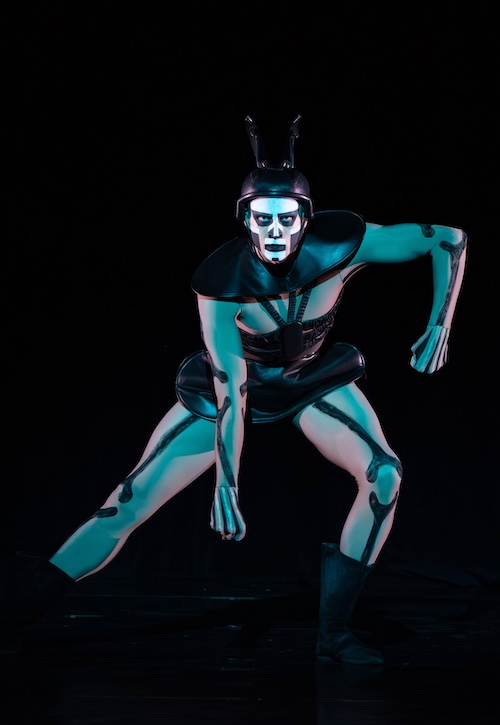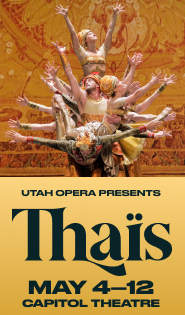Weimar-era “Green Table” proves a powerful experience in Ballet West program
With “Love and War,” Ballet West offers a triple bill of diverse works, including a Utah premiere. All of these pieces showcase the dancers’ agility and wide range of expressive movement.
And Friday night’s opening performance at the Capitol Theatre, afford the company showed off its remarkably precise, well defined dancing both individually and as an ensemble.
The most successful of the three works was The Green Table. Premiered in 1932, this collaboration between composer Frederick Cohen and choreographer Kurt Jooss was created during the final months of the decaying Weimar Republic, a time when anti-Semitism was rampant and the Nazis were rapidly gaining political power in Germany. The piece is a powerful political statement about the ineffectiveness of peace negotiations amid the rise of militarism and the senselessness of war and its horrific aftermath.
The Green Table opens with a group of diplomats (The “Gentlemen in Black”), wearing grotesque masks, standing around a table covered in a green cloth. Their discussions end with them pulling out guns and shooting in the air, symbolizing a declaration of war. The following six scenes depict war and its consequences. The figure of Death is in each scene, either in the background or interacting with the other dancers. Ultimately Death triumphs and the piece ends as it began, with The Gentlemen in Black once again around the green table.
Adrian Fry, in a skeletal costume, was outstanding as Death, bringing a sinister presence to his character and dancing with bold, decisive movements.
The ensemble brought compelling sincerity as they portrayed various characters — soldiers eager for war, the sobbing loved ones they leave behind and the tragic plight of the refugees.
The work is written for two pianos, and music director Jared Oaks and company pianist Nicholas Maughan gave a forceful account of the score. The music is ominous throughout, with heavy, thick chords accompanying the war scenes and more fluid, lyrical passages during the scene where the soldiers say their goodbyes to their loved ones. One of the most striking elements in the music, though, is the morbid tango that accompanies The Gentlemen in Black in the opening and closing scenes — a deliberate parody of what is unfolding here.
Blake Works I opened the program and was heard in its Utah premiere. The featured dancers in these three pieces display expressive moves and subtle inflections in their interpretations, that is in stark contrast to the other four sections, in which their moves are mechanical and strictly follow the beat. The athleticism of the dancers in these sections was impressive and their steps remarkable for their precision.
Unfortunately the dominant weakness of the music had a negative impact on the piece. Taken from the English singer-songwriter James Blake’s album The Colour in Anything, the style is electro-pop, with unrelentingly repetitive phrases and an incessant pounding beat that quickly wears thin. The only saving grace of the score is that of the seven tracks choreographer William Forsythe uses from the album, three are a welcome relief with more fluency and lyricism,
The centerpiece of the evening was Red Angels, choreographed by Ulysses Dove to Richard Einhorn’s Maxwell’s Demon for solo electric violin.
An abstract piece, like Blake Works I, Red Angels features two couples — Emily Adams and Hadriel Diniz, and Amy Potter and Jordan Veit — dancing together and also in solo turns. Their dancing was rhythmically dramatic and energetic and captured the robust vitality of the music. Violinist Mary Rowell, who premiered the piece in New York in 1994, gave a stunning live performance Friday and brought nuanced inflection to her playing.
Ballet West’s “Love and War” runs through April 20. balletwest.org

